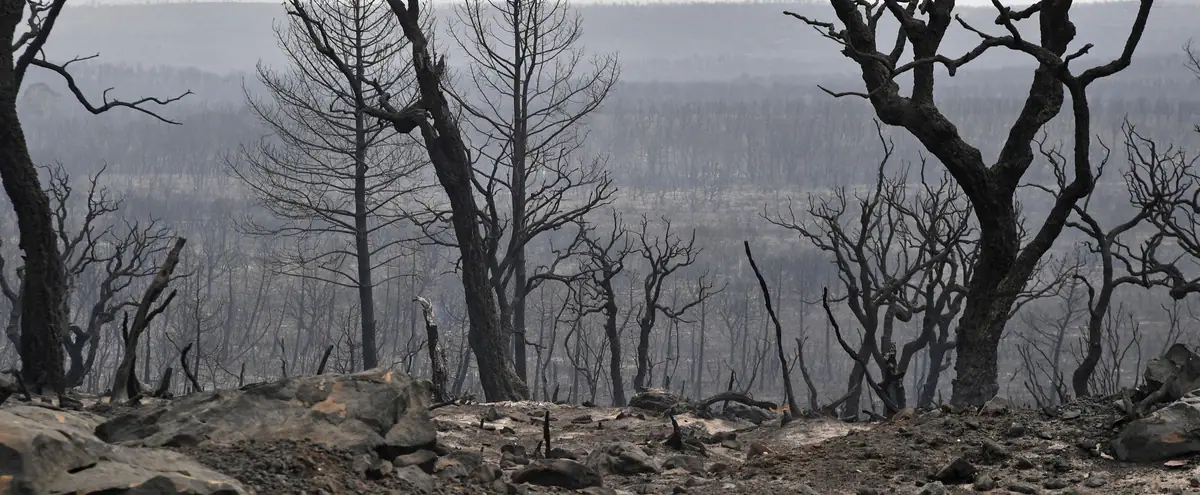More than 10% of the area of a national park in northeastern Algeria classified by UNESCO has been destroyed by the violent fires which have ravaged the northeastern part of this Maghreb country in recent days, indicated an expert on Saturday at AFP.
• Read also: Droughts, fires and floods: dozens of deaths linked to extreme weather around the world
• Read also: Spain: the great fire in the Valencia region resists rain and firefighters
Endowed with a unique ecosystem in the Mediterranean basin and classified as a biosphere reserve by UNESCO in 1990, “El Kala National Park has seen more than 10,000 hectares go up in smoke in recent days”, said the academic. Rafiq Baba Ahmed.
The gigantic fires on Wednesday and Thursday in northeastern Algeria killed 37 people according to official data, while local media report a 38th victim, a 72-year-old man in Guelma (east), as well as of missing.
“In the last 48 hours, firefighters have intervened on 51 fires” in 17 departments, and they are still fighting two fires in Tlemcen, in the west of the country, Algerian civil protection said on Saturday on its Facebook account.
El Kala Park, located not far from the city of the same name, is considered one of the main reservoirs of biodiversity in the Mediterranean basin. Covering a total area of nearly 80,000 hectares, it is home to several hundred species of birds, mammals and fish which give it “an exceptional biological richness”, underlines Mr. Baba Ahmed, who was director of the park. .
“The El Kala Biosphere Reserve is home to a very remarkable bird fauna, more than 60,000 migratory birds every winter,” says UNESCO on its website.
“It is a mosaic of marine, dune, lake and forest ecosystems, with its marine strip rich in corals, Posidonia seagrass beds and fish,” adds the UN organization.
Every summer, the north of Algeria is affected by forest fires, a phenomenon which is accentuated from year to year under the effect of climate change, leading to droughts and heat waves.
Fires have “always, with one or the other exception, affected the massifs of the park”, recalls Mr. Baba Ahmed. And to add: “The forest does not recover, it becomes sparse and evolves towards a maquis of shrubs, to end up in bare soil, doomed to erosion”.
“The other impact of the fires is the scarcity, not to say the disappearance of animals and plants, and we see this through the emblem of the region, the Barbary deer which has completely disappeared for twenty years or so. still the lynx”, says the university “pessimistic” for the future of the park.
Because “over time, fires weaken the forest, making it vulnerable to other attacks such as those from harmful insects, but above all human activities”, he underlines.
In addition to the damage caused by the fires, “the forest massifs have been fragmented by a dense road network as part of the opening up which has favored scattered constructions and the appearance of new localities with electricity and natural gas connections”, explains he.
The biological richness of the park’s wetlands has been “upset, in particular by aquaculture projects such as the restocking by grass carp, which has overcome the aquatic vegetation on which birds, fish and other crustaceans and molluscs feed” , he concludes.
